Let us know what you think about this article. Do you agree or disagree?
Subaru Ringland failures is a topic I have wanted to write about for quite a long time but I haven’t found the time until now to really put “pen to paper” as they say. This is probably one of the most controversial topics that makes its rounds throughout the Subaru community. There are a lot of theories and discussions on what causes these failures. These include things like poor design, weak components, abuse, fuel line routing etc. With so many opinions it can be difficult to really weed through everything and get an idea of what steps you can take to reduce the risk of having a ringland failure. I do not in any way claim to be a guru or that I have the 1 size fits all answer to this. But over my many years involved in the Subaru community and helping customers build their cars or rebuild after a failure I feel that it’s important to share my thoughts and experience.
For those who don’t know a ringland failure is usually as simple as a crack in the part of the piston that your piston rings “sit” on. This in turn causes a loss in compression in that cylinder with symptoms of misfiring, smoking etc. In it’s worst form if you get 2 cracks on a piston it can eventually break a chunk away and damage the cylinder walls. See the image below for an example of a really bad failure.
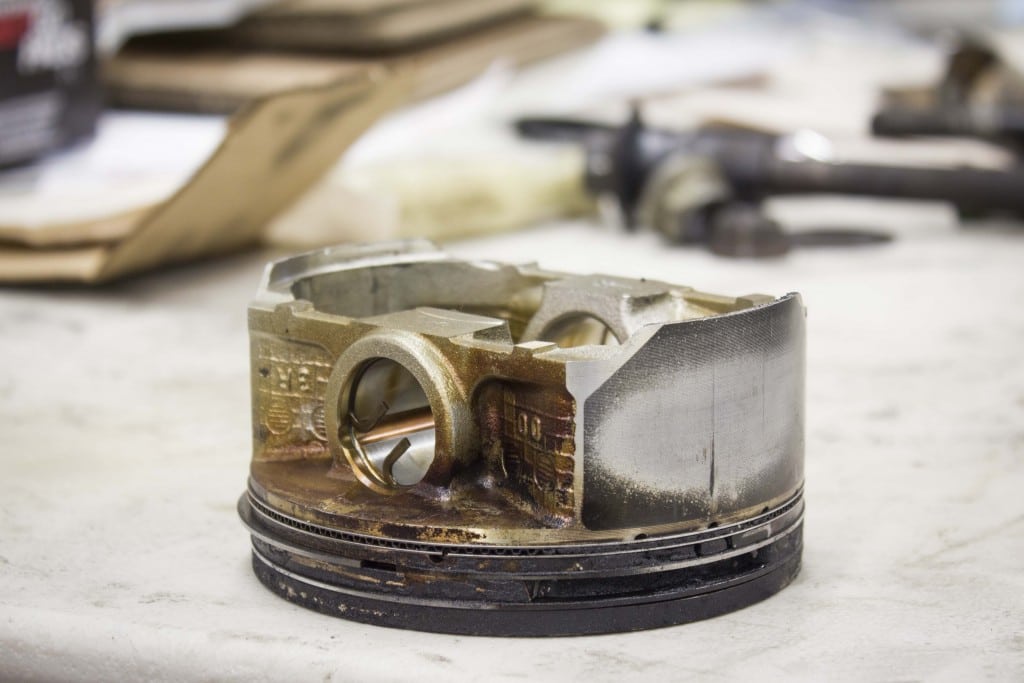
Maintenance
The first and most important aspect to preventing a ringland failure is going to be the maintenance and care for your Subaru. The single most important thing you can do is to be proactive about maintenance. Regular oil changes with good quality oil (Motul, Total etc) and a good quality oil filter (Subaru OEM or equivalent). Keeping up with the other aspects such as spark plugs, air filters, PCV valve are also important. If your car is modified you should be reducing the service intervals from what the service manual suggests. For example Subaru recommends changing your spark plugs every 96,000KM for most turbo models. If your car is modified I would reduce this down to 60,000KM. PCV valves are meant to be inspected, cleaned or replaced every 48,000KM but I would bring this down to every 30,000KM or once a year.
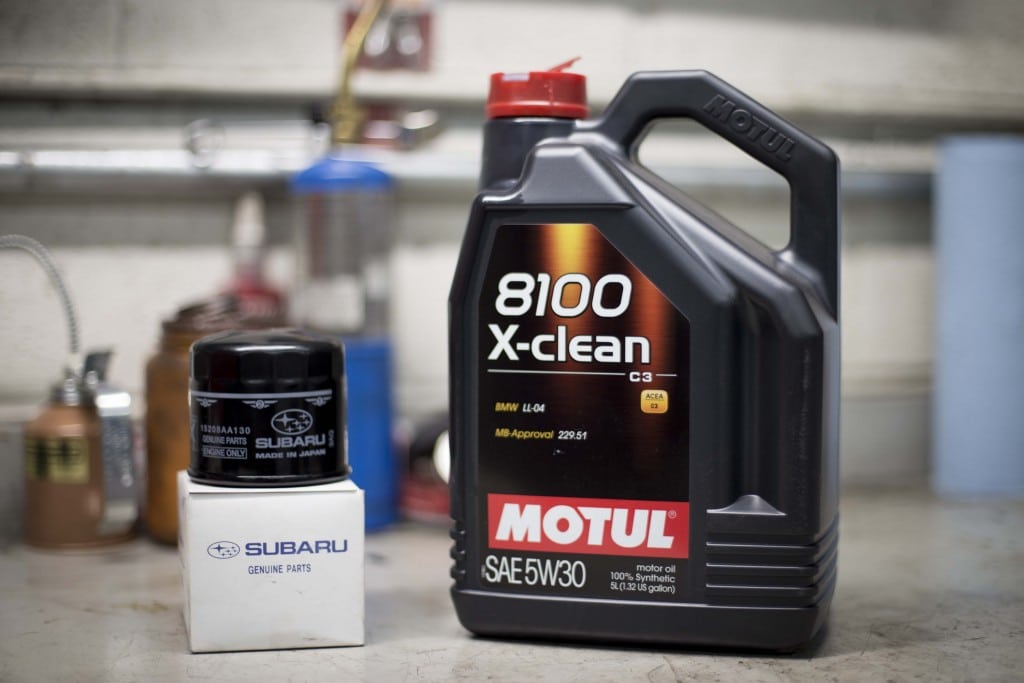
Another aspect that I recommend is to use good quality gas and try to be consistent with where you fill up. While most turbo Subaru’s are meant to be run on minimum 91 octane, it does not hurt to run higher octane such as 94 octane we have in Ontario. The additional knock resistance of the higher octane fuel will reduce the risk. While the factory ECU is constantly learning based on the information from the O2 sensor, knock sensor etc it also takes time for these changes to take effect. An example would be if you’re tuned on 94 Octane and have to switch to 91 octane level due to availability. In this scenario I would recommend switching to a 91 octane map if you have one or driving the car as mildly as you can. If you drive the car aggressively without a map change the probability for detonation is going to be quite high before the ECU can try to protect the engine. There are parameters that will provide on the fly adjustments to fueling and ignition timing but these are reactive and not pro-active. The pro-active parameters take time to see a consistent need to change so be mindful of this should you find yourself in this scenario.
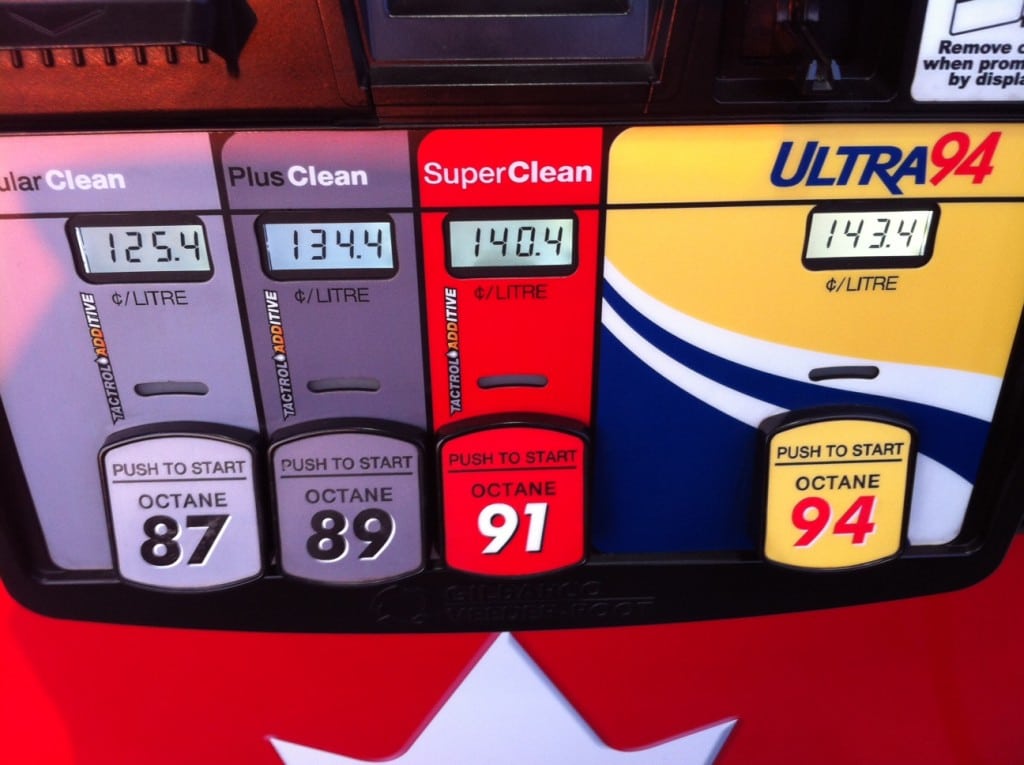
Another very common issue I see is those that don’t realize how bad it is to go 100% throttle at low RPM in your highest gear (5th or 6th depending on your transmission). The load and stress this puts on the engine is, in my opinion, a factor in some reported failures. Going and doing a “highway pull” in 6th gear in your STi from 3000RPM at 100% throttle is a very bad idea. By doing this you’re basically asking the engine to work much harder then it needs to which in turn creates more heat and eventually detonation. An easy way to think about this is if you’re driving an automatic on the highway and you go 100% throttle. What does the transmission do? It drops down to a lower gear to use the mechanical advantage and reduce the stress on the motor. In a manual transmission vehicle the same should be done. If you’re looking to pass someone on the highway there’s 2 ways to accomplish this. First you can simply drop to a lower gear and then accelerate. The other way is to simply roll into the throttle and maybe get to 40-50%. You will have more then enough power to pass the person and you will not be loading up the engine with stress and heat.
The last point of this first section is about cold starting your car. Many people don’t realize that it can take 5-10 minutes of driving in the warm seasons before your oil temperature reaches normal operating temps. This drastically changes in the cold where it can take up to 20 minutes of moderate driving for the oil to reach close to 80 degrees Celsius. That means even though your coolant is up to temperature the oil is still cold and not flowing through the engine like it’s designed and not protecting components from wear. While this doesn’t directly impact/relate to detonation it is something to keep in mind as the overall health of the engine is important not just looking at one aspect. So when you first cold start your car, wait a minute or two before taking off if you can. A good rule of thumb is to wait 3-5 minutes after coolant is up to temperature before driving your car hard as your oil should come up to temp around this time. If you do not take care of your car then anything else below will become useless and you have no one to blame but yourself if your engine fails.
Tuning
The second part is the tuning or calibration of the engines ECU so it is operating properly and efficiently. Unlike a naturally aspirated car that is less sensitive to modifications, a turbo car tends to react to even small changes. This can be as simple as installing an intake on your STi or WRX, which in many cases will change the MAF housing diameter throwing off the whole factory tune or calibration. Many times this will lead to a lean air/fuel ratio which will run hotter and is more likely to suffer detonation/knock. The larger diameter MAF housing will also send the ECU a lower indicated load then it should which will add more ignition timing. This doubling effect is the perfect situation for knock to develop. So all modifications should be accompanied by a proper ECU tune or calibration.
I think it’s become pretty well known that the Subaru factory tuning leaves a lot to be desired in the realm of power and delivery. This can be fixed with a reflash such as those that come pre-loaded on the COBB AccessPORT. There’s a few options out there for engine management solutions for your Subaru but I feel that COBB really is the most user friendly and provides great support if you ever have an issue. The biggest benefit in relation to this article that the AccessPORT provides maps that will allow you to modify your car without requiring a visit to a dyno tuner. COBB has created OTS (Off-The-Shelf) maps for most supported cars ranging from stock to upgraded intake, exhaust and even injectors. So if you plan to mod your Subaru for more power the first and only step is an engine management solution such as the COBB AccessPORT.
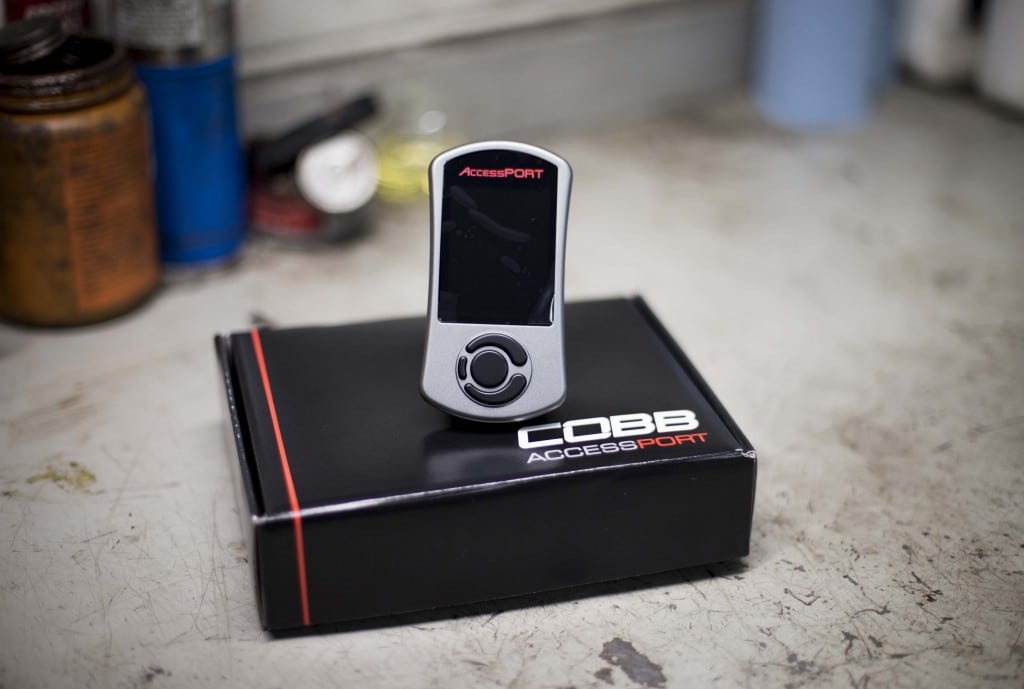
While the OTS maps will work well for many cars, it is always a good idea to log parameters such as Feedback Knock, A/F Learning, A/F Ratio, Dynamic Advance Multiplier etc and make sure that your car is operating well on that specific map. If you do see feedback knock, DAM going below 1.0 etc it is a good idea to look into getting a custom tune from a reputable tuner near you. A tuner will be able to calibrate the ECU tune specifically for your engine so that it is making the most power with safety in mind. Make sure that you have a plan to get the car tuned after installing the modifications you are doing. Having a safe and reliable tune can not only unlock the maximum potential of your engine but also provide you with peace of mind knowing your engine is not running on the ragged edge for ignition timing or running 2-3 PSI more boost then it is tuned for. The knock control system is reactive so when it makes a change knock has already occurred. A custom tune is done so the engine will experience little to no knock and not have to rely on the ECU to adjust timing dynamically. Think of it as being able to set the limits before something bad happens rather then only being able to compensate after it has happened. Our tuner of choice, Sasha owner of OnPoint Dyno, has a wealth of experience with ECU calibration from street cars to professional race cars competing in different series within IMSA. His ability to provide more power with a proper safety margin is one of the most important factors in having a healthy car for a long time.
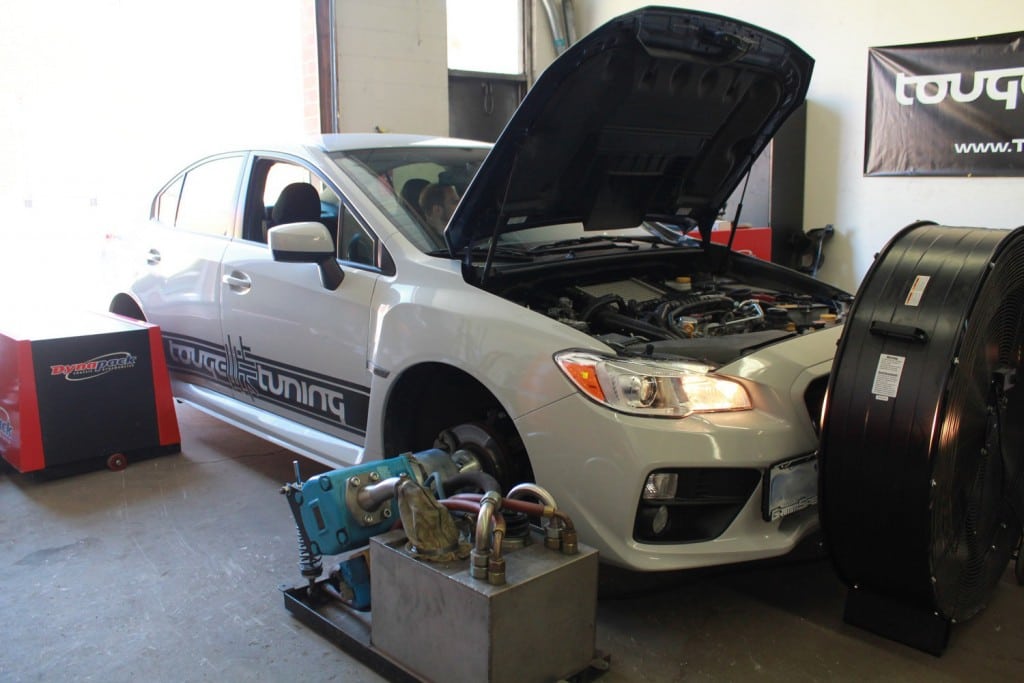
Exhaust System
Something that I feel goes hand in hand with tuning is changing out your exhaust system to something with a high-flow cat and free-flowing cat-back. Leaving the factory downpipe in place and driving your car hard for extended periods of time is asking for trouble. The reason for this is the factory downpipe is extremely restrictive to exhaust flow due to it’s small diameter and two catalytic converters which are designed for emission compliance and longevity with performance not even a consideration. These 2 factors combined with lengthy periods of WOT driving cause heat to build up and work it’s way back towards the engine. This build up can increase the chances of detonation and eventually ringland failure. The same goes for the cat-back system which is not as big of a restriction as the downpipe but it can still play a role in this. As such I would recommend to upgrade the cat-back if you’re planning to track your car.
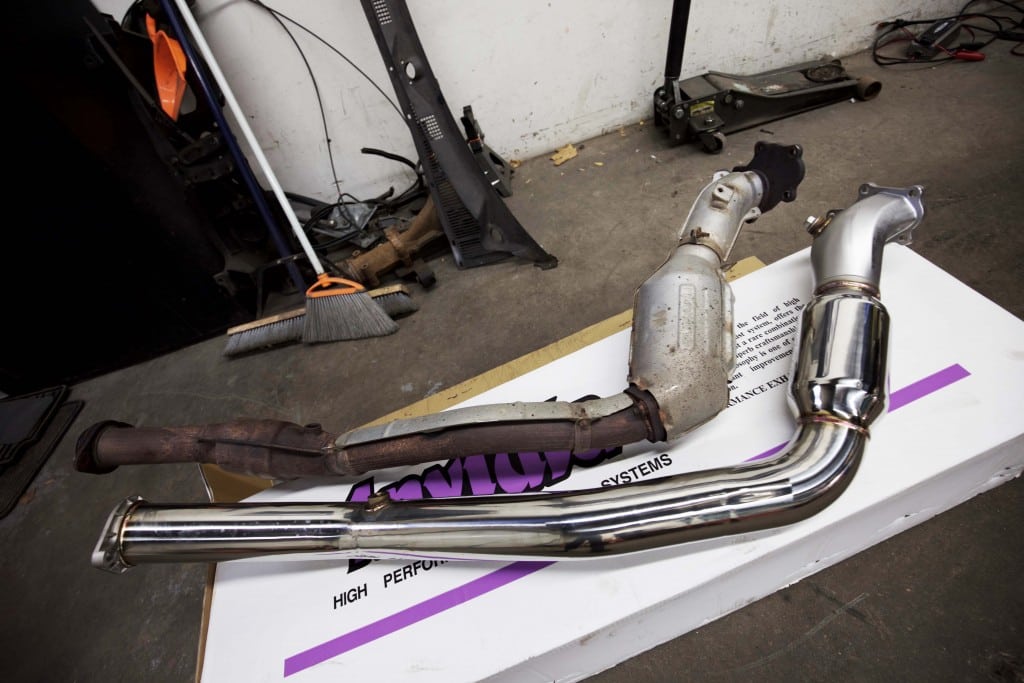
Air Oil Separators & Catch Cans
One of the other factors that plays a role in detonation or knock, which causes ringland failures, is fuel dilution caused by blow-by or oil contamination. As mentioned above it is important to run good quality consistent fuel so that when you want to have fun with the car it’s able to do so safely. However this can become irrelevant if you have excessive oil in your intake system. Where would this oil come from you might ask? The oil makes it’s way into the intake system from your crankcase in the form of oil vapour. On a Subaru there’s 3 crankcase vents which lead to the turbo inlet via hoses. When the oil vapours make there way through these hoses and into the turbo inlet they eventually make their way into your combustion chamber. In normal operation the amounts are small enough that they do not have a big impact on your engine operation. However when you start making more power, running more boost, the crankcase pressures tend to increase and in turn the blow-by gases tend to increase as well. This in turn means more oil vapour in the intake system and eventually into your combustion chamber. In larger amounts this oil can dilute the octane level of your fuel so much so that it no longer possess the cooling or knock resistance it once had. As an extreme example you could be running 94 octane but the effective octane in the combustion chamber could be 87 octane due to all the oil present. Lower octane means less cooling which greatly increases the chances for pre-ignition/detonation/knock.
If you’ve ever had your top mount intercooler off and noticed that the coupler to the throttle body was slick with oil residue this would indicate you have a good amount of blow-by in your intake system. So what fixes this? Well the simplest answer would be a catch can system or Air/Oil Seperator (AOS). A catch can, in it’s simplest form, is designed to capture the oil in these gases. It does this by running the vent hose from your engine in one port of the can, through a filter/media such as wire mesh, and then the exits out another port back into your turbo inlet. The filter/media is meant to allow the oil in the vapours to condense and fall out of the air and be captured in the bottom of the can. These do work effectively if you have a well designed unit but in my experience the cheap cans tend to be inefficient at capturing and containing the oil. Some of the reasons for this are the inlet/outlet ports are too small which increases the velocity at which the air passes through the can. If the air is moving too fast there simply won’t be enough time for the oil to condense and “fall” out of the air. Secondly most of them do not have any baffles or means of directing the air through the media. A good catch can will have some form of a wall or baffle between the inlet and outlet ports that will force the air to go through the filter media and around baffle before exiting the can. There’s many good catch cans on the market today from companies like Radium Engineering, Moroso and Peterson. These cans work well in many applications but in some they don’t have all of the features you may need. These applications tend to be street applications that see cold temperatures and lots of cold starts or short trip driving. In these cases the above mentioned tend to have issues with the water and oil condensing inside the can rapidly and turning into a yellow sludge requiring regular cleaning and maintenance.
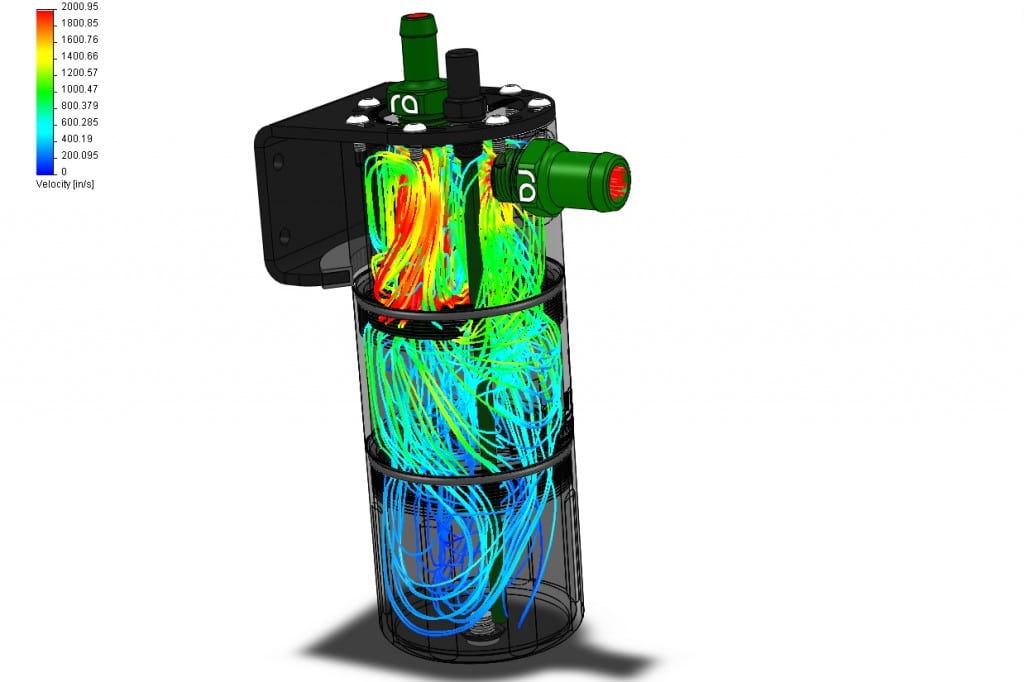
To combat this the Air Oil Separator has made it’s way into the market as an effective low maintenance solution for the Subaru owner. An AOS uses a variety of techniques to extract the oil from the crankcase vapours. The main ways are using multiple baffles or chambers inside that force the incoming gases to spin forcing the heavier oil against the walls where it condenses and drains. They also usually make the vapours travel up and down multiple times which makes the heavier oil fall out of the gases before it reaches the vent/exit. These tend to be much larger then a typical catch can but have proven to be very effective at reducing or eliminating oil blow-by making it’s way into your intake system. They’re able to do this without creating back-pressure in the crankcase which you do not want to happen as it can lead to oil leaks or blown seals.
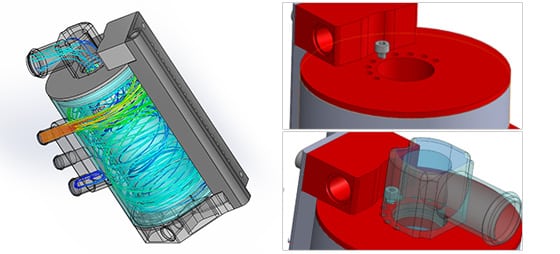
Where these take it to the next level over a catch can is that the good ones run coolant through the can which in turn heats the can up extremely hot, burn your hand hot. This heating serves to reduce the amount of water condensing inside the can and instead it passes as a gas out of the can. It also heats it up enough to make any condensed water evaporate and exit out of the vent hose. This means little to no maintenance needed for the owner which is becoming more important. The other aspect of these Air/Oil Separators is they normally have a drain located at the bottom which allows the warm liquid oil to drain back into your engine after being removed from the blow-by gases. My number one choice for an AOS on a Subaru is the IAG AOS which I believe is the best designed and most flexible. There’s also Crawford and Perrin as well with similarly designed units but I have found the IAG to be the best performing unit.
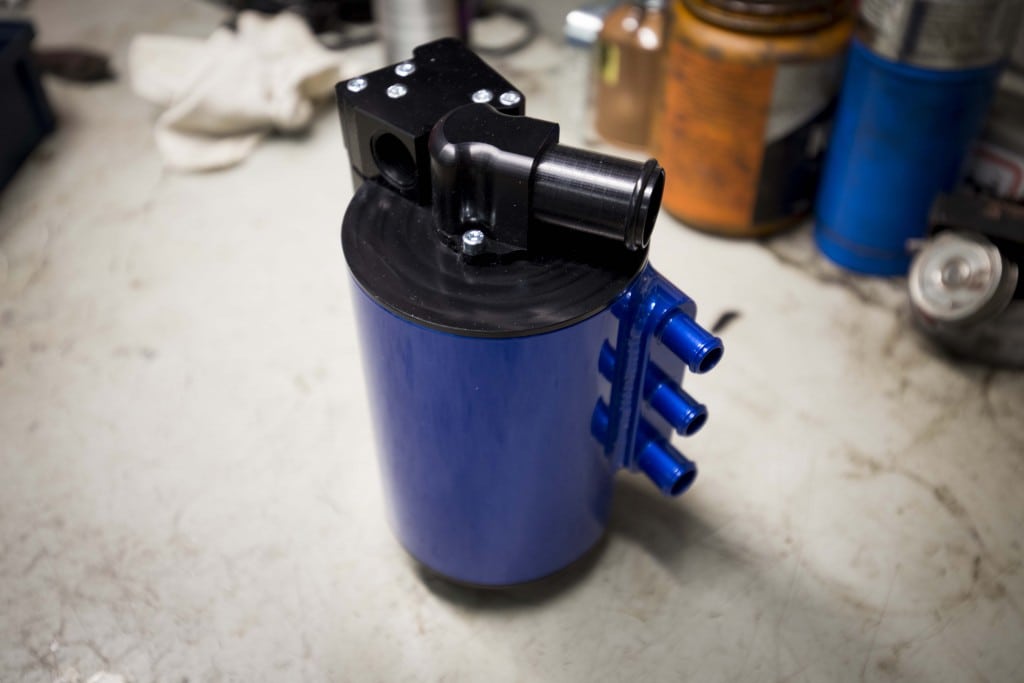
Out of all of this the most important question to ask yourself is how much maintenance do you want to do? How big are the inlet and outlet ports of the Catch Can/AOS (Bigger is better)? By having a system in place to capture these oil vapours you can reduce one of the biggest risk factors associated with ringland failures.
Equal Length Headers
One of the less proven causes of ringland failures is the question of whether the factory exhaust manifold or header design is the reason cylinder #4 and cylinder #2 are more prone to failure. The reasons for this belief revolve around the drivers side exhaust manifold. The drivers side has the longest path to the uppipe and as such is more prone to back pressure and runs hotter then cylinders 1 and 3. Changing this out to a well designed Equal Length exhaust manifold that has each exhaust pulse following the next in the cycle allows smoother unrestricted flow and as an added benefit it also improves boost threshold and power. I do believe this plays a role in the cause of ringland failures but it is much smaller compared to the above areas of concern.
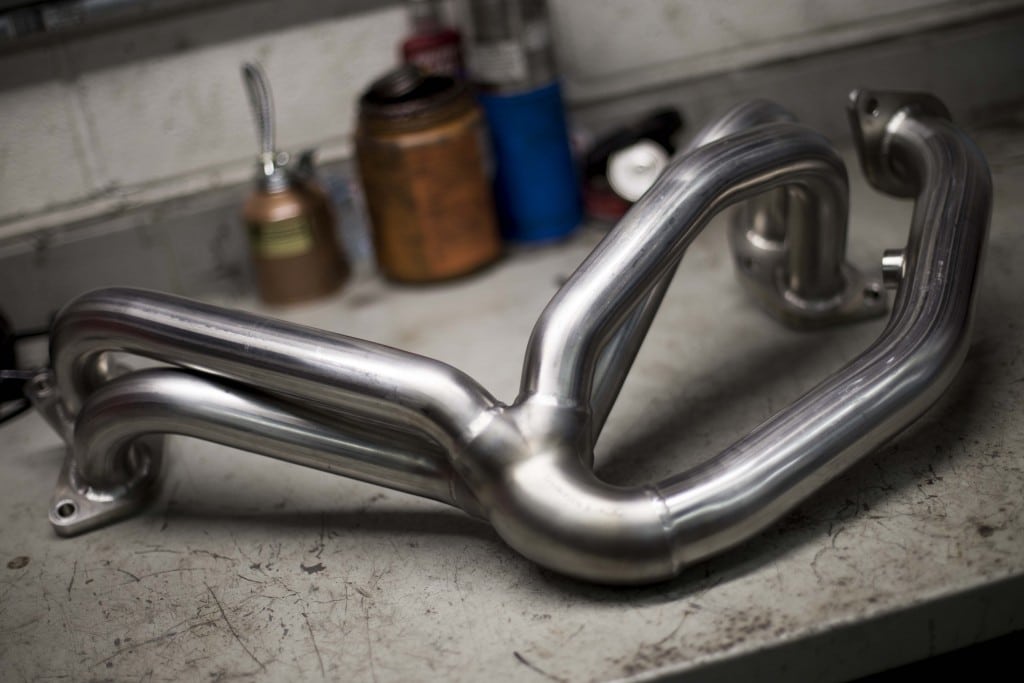
Enjoy Your Car!
While I expect there will be many with different opinions on what I’ve written please understand this is coming from years of hands on experience and knowledge. This isn’t coming from working on or owning a single Subaru but from building and maintaining thousands of Subaru’s in different states of modification. There will always be stock cars that have failures, but this can easily come down to abuse or lack of maintenance. Then there will be those that modify their cars without the above considerations that have no issues. What I have found is that in between those is the larger majority of cases that a failure or lack of failure can be traced back to something I have mentioned above. You don’t need to be afraid to modify your Subaru. You just need to modify it properly with a plan in place using good components and getting work and advice from professionals that understand and know what they are doing. If you do this a Subaru is one of the most fun, safest and reliable brands around.
Thank you for taking the time and I really hope that this was useful to you in some way, shape or form. Keep waving Subie friends!
Posted by Chris@TougeTuning under Tech Info
Subaru Ringland failures is a topic I have wanted to write about for quite a long time but I haven’t found the time until now to really put “pen to paper” as they say. This is probably one of the most controversial topics that makes its rounds throughout the Subaru community. There are a lot of theories and discussions on what causes these failures. These include things like poor design, weak components, abuse, fuel line routing etc. With so many opinions it can be difficult to really weed through everything and get an idea of what steps you can take to reduce the risk of having a ringland failure. I do not in any way claim to be a guru or that I have the 1 size fits all answer to this. But over my many years involved in the Subaru community and helping customers build their cars or rebuild after a failure I feel that it’s important to share my thoughts and experience.
For those who don’t know a ringland failure is usually as simple as a crack in the part of the piston that your piston rings “sit” on. This in turn causes a loss in compression in that cylinder with symptoms of misfiring, smoking etc. In it’s worst form if you get 2 cracks on a piston it can eventually break a chunk away and damage the cylinder walls. See the image below for an example of a really bad failure.

Maintenance
The first and most important aspect to preventing a ringland failure is going to be the maintenance and care for your Subaru. The single most important thing you can do is to be proactive about maintenance. Regular oil changes with good quality oil (Motul, Total etc) and a good quality oil filter (Subaru OEM or equivalent). Keeping up with the other aspects such as spark plugs, air filters, PCV valve are also important. If your car is modified you should be reducing the service intervals from what the service manual suggests. For example Subaru recommends changing your spark plugs every 96,000KM for most turbo models. If your car is modified I would reduce this down to 60,000KM. PCV valves are meant to be inspected, cleaned or replaced every 48,000KM but I would bring this down to every 30,000KM or once a year.

Another aspect that I recommend is to use good quality gas and try to be consistent with where you fill up. While most turbo Subaru’s are meant to be run on minimum 91 octane, it does not hurt to run higher octane such as 94 octane we have in Ontario. The additional knock resistance of the higher octane fuel will reduce the risk. While the factory ECU is constantly learning based on the information from the O2 sensor, knock sensor etc it also takes time for these changes to take effect. An example would be if you’re tuned on 94 Octane and have to switch to 91 octane level due to availability. In this scenario I would recommend switching to a 91 octane map if you have one or driving the car as mildly as you can. If you drive the car aggressively without a map change the probability for detonation is going to be quite high before the ECU can try to protect the engine. There are parameters that will provide on the fly adjustments to fueling and ignition timing but these are reactive and not pro-active. The pro-active parameters take time to see a consistent need to change so be mindful of this should you find yourself in this scenario.

Another very common issue I see is those that don’t realize how bad it is to go 100% throttle at low RPM in your highest gear (5th or 6th depending on your transmission). The load and stress this puts on the engine is, in my opinion, a factor in some reported failures. Going and doing a “highway pull” in 6th gear in your STi from 3000RPM at 100% throttle is a very bad idea. By doing this you’re basically asking the engine to work much harder then it needs to which in turn creates more heat and eventually detonation. An easy way to think about this is if you’re driving an automatic on the highway and you go 100% throttle. What does the transmission do? It drops down to a lower gear to use the mechanical advantage and reduce the stress on the motor. In a manual transmission vehicle the same should be done. If you’re looking to pass someone on the highway there’s 2 ways to accomplish this. First you can simply drop to a lower gear and then accelerate. The other way is to simply roll into the throttle and maybe get to 40-50%. You will have more then enough power to pass the person and you will not be loading up the engine with stress and heat.
The last point of this first section is about cold starting your car. Many people don’t realize that it can take 5-10 minutes of driving in the warm seasons before your oil temperature reaches normal operating temps. This drastically changes in the cold where it can take up to 20 minutes of moderate driving for the oil to reach close to 80 degrees Celsius. That means even though your coolant is up to temperature the oil is still cold and not flowing through the engine like it’s designed and not protecting components from wear. While this doesn’t directly impact/relate to detonation it is something to keep in mind as the overall health of the engine is important not just looking at one aspect. So when you first cold start your car, wait a minute or two before taking off if you can. A good rule of thumb is to wait 3-5 minutes after coolant is up to temperature before driving your car hard as your oil should come up to temp around this time. If you do not take care of your car then anything else below will become useless and you have no one to blame but yourself if your engine fails.
Tuning
The second part is the tuning or calibration of the engines ECU so it is operating properly and efficiently. Unlike a naturally aspirated car that is less sensitive to modifications, a turbo car tends to react to even small changes. This can be as simple as installing an intake on your STi or WRX, which in many cases will change the MAF housing diameter throwing off the whole factory tune or calibration. Many times this will lead to a lean air/fuel ratio which will run hotter and is more likely to suffer detonation/knock. The larger diameter MAF housing will also send the ECU a lower indicated load then it should which will add more ignition timing. This doubling effect is the perfect situation for knock to develop. So all modifications should be accompanied by a proper ECU tune or calibration.
I think it’s become pretty well known that the Subaru factory tuning leaves a lot to be desired in the realm of power and delivery. This can be fixed with a reflash such as those that come pre-loaded on the COBB AccessPORT. There’s a few options out there for engine management solutions for your Subaru but I feel that COBB really is the most user friendly and provides great support if you ever have an issue. The biggest benefit in relation to this article that the AccessPORT provides maps that will allow you to modify your car without requiring a visit to a dyno tuner. COBB has created OTS (Off-The-Shelf) maps for most supported cars ranging from stock to upgraded intake, exhaust and even injectors. So if you plan to mod your Subaru for more power the first and only step is an engine management solution such as the COBB AccessPORT.

While the OTS maps will work well for many cars, it is always a good idea to log parameters such as Feedback Knock, A/F Learning, A/F Ratio, Dynamic Advance Multiplier etc and make sure that your car is operating well on that specific map. If you do see feedback knock, DAM going below 1.0 etc it is a good idea to look into getting a custom tune from a reputable tuner near you. A tuner will be able to calibrate the ECU tune specifically for your engine so that it is making the most power with safety in mind. Make sure that you have a plan to get the car tuned after installing the modifications you are doing. Having a safe and reliable tune can not only unlock the maximum potential of your engine but also provide you with peace of mind knowing your engine is not running on the ragged edge for ignition timing or running 2-3 PSI more boost then it is tuned for. The knock control system is reactive so when it makes a change knock has already occurred. A custom tune is done so the engine will experience little to no knock and not have to rely on the ECU to adjust timing dynamically. Think of it as being able to set the limits before something bad happens rather then only being able to compensate after it has happened. Our tuner of choice, Sasha owner of OnPoint Dyno, has a wealth of experience with ECU calibration from street cars to professional race cars competing in different series within IMSA. His ability to provide more power with a proper safety margin is one of the most important factors in having a healthy car for a long time.

Exhaust System
Something that I feel goes hand in hand with tuning is changing out your exhaust system to something with a high-flow cat and free-flowing cat-back. Leaving the factory downpipe in place and driving your car hard for extended periods of time is asking for trouble. The reason for this is the factory downpipe is extremely restrictive to exhaust flow due to it’s small diameter and two catalytic converters which are designed for emission compliance and longevity with performance not even a consideration. These 2 factors combined with lengthy periods of WOT driving cause heat to build up and work it’s way back towards the engine. This build up can increase the chances of detonation and eventually ringland failure. The same goes for the cat-back system which is not as big of a restriction as the downpipe but it can still play a role in this. As such I would recommend to upgrade the cat-back if you’re planning to track your car.

Air Oil Separators & Catch Cans
One of the other factors that plays a role in detonation or knock, which causes ringland failures, is fuel dilution caused by blow-by or oil contamination. As mentioned above it is important to run good quality consistent fuel so that when you want to have fun with the car it’s able to do so safely. However this can become irrelevant if you have excessive oil in your intake system. Where would this oil come from you might ask? The oil makes it’s way into the intake system from your crankcase in the form of oil vapour. On a Subaru there’s 3 crankcase vents which lead to the turbo inlet via hoses. When the oil vapours make there way through these hoses and into the turbo inlet they eventually make their way into your combustion chamber. In normal operation the amounts are small enough that they do not have a big impact on your engine operation. However when you start making more power, running more boost, the crankcase pressures tend to increase and in turn the blow-by gases tend to increase as well. This in turn means more oil vapour in the intake system and eventually into your combustion chamber. In larger amounts this oil can dilute the octane level of your fuel so much so that it no longer possess the cooling or knock resistance it once had. As an extreme example you could be running 94 octane but the effective octane in the combustion chamber could be 87 octane due to all the oil present. Lower octane means less cooling which greatly increases the chances for pre-ignition/detonation/knock.
If you’ve ever had your top mount intercooler off and noticed that the coupler to the throttle body was slick with oil residue this would indicate you have a good amount of blow-by in your intake system. So what fixes this? Well the simplest answer would be a catch can system or Air/Oil Seperator (AOS). A catch can, in it’s simplest form, is designed to capture the oil in these gases. It does this by running the vent hose from your engine in one port of the can, through a filter/media such as wire mesh, and then the exits out another port back into your turbo inlet. The filter/media is meant to allow the oil in the vapours to condense and fall out of the air and be captured in the bottom of the can. These do work effectively if you have a well designed unit but in my experience the cheap cans tend to be inefficient at capturing and containing the oil. Some of the reasons for this are the inlet/outlet ports are too small which increases the velocity at which the air passes through the can. If the air is moving too fast there simply won’t be enough time for the oil to condense and “fall” out of the air. Secondly most of them do not have any baffles or means of directing the air through the media. A good catch can will have some form of a wall or baffle between the inlet and outlet ports that will force the air to go through the filter media and around baffle before exiting the can. There’s many good catch cans on the market today from companies like Radium Engineering, Moroso and Peterson. These cans work well in many applications but in some they don’t have all of the features you may need. These applications tend to be street applications that see cold temperatures and lots of cold starts or short trip driving. In these cases the above mentioned tend to have issues with the water and oil condensing inside the can rapidly and turning into a yellow sludge requiring regular cleaning and maintenance.

To combat this the Air Oil Separator has made it’s way into the market as an effective low maintenance solution for the Subaru owner. An AOS uses a variety of techniques to extract the oil from the crankcase vapours. The main ways are using multiple baffles or chambers inside that force the incoming gases to spin forcing the heavier oil against the walls where it condenses and drains. They also usually make the vapours travel up and down multiple times which makes the heavier oil fall out of the gases before it reaches the vent/exit. These tend to be much larger then a typical catch can but have proven to be very effective at reducing or eliminating oil blow-by making it’s way into your intake system. They’re able to do this without creating back-pressure in the crankcase which you do not want to happen as it can lead to oil leaks or blown seals.

Where these take it to the next level over a catch can is that the good ones run coolant through the can which in turn heats the can up extremely hot, burn your hand hot. This heating serves to reduce the amount of water condensing inside the can and instead it passes as a gas out of the can. It also heats it up enough to make any condensed water evaporate and exit out of the vent hose. This means little to no maintenance needed for the owner which is becoming more important. The other aspect of these Air/Oil Separators is they normally have a drain located at the bottom which allows the warm liquid oil to drain back into your engine after being removed from the blow-by gases. My number one choice for an AOS on a Subaru is the IAG AOS which I believe is the best designed and most flexible. There’s also Crawford and Perrin as well with similarly designed units but I have found the IAG to be the best performing unit.

Out of all of this the most important question to ask yourself is how much maintenance do you want to do? How big are the inlet and outlet ports of the Catch Can/AOS (Bigger is better)? By having a system in place to capture these oil vapours you can reduce one of the biggest risk factors associated with ringland failures.
Equal Length Headers
One of the less proven causes of ringland failures is the question of whether the factory exhaust manifold or header design is the reason cylinder #4 and cylinder #2 are more prone to failure. The reasons for this belief revolve around the drivers side exhaust manifold. The drivers side has the longest path to the uppipe and as such is more prone to back pressure and runs hotter then cylinders 1 and 3. Changing this out to a well designed Equal Length exhaust manifold that has each exhaust pulse following the next in the cycle allows smoother unrestricted flow and as an added benefit it also improves boost threshold and power. I do believe this plays a role in the cause of ringland failures but it is much smaller compared to the above areas of concern.

Enjoy Your Car!
While I expect there will be many with different opinions on what I’ve written please understand this is coming from years of hands on experience and knowledge. This isn’t coming from working on or owning a single Subaru but from building and maintaining thousands of Subaru’s in different states of modification. There will always be stock cars that have failures, but this can easily come down to abuse or lack of maintenance. Then there will be those that modify their cars without the above considerations that have no issues. What I have found is that in between those is the larger majority of cases that a failure or lack of failure can be traced back to something I have mentioned above. You don’t need to be afraid to modify your Subaru. You just need to modify it properly with a plan in place using good components and getting work and advice from professionals that understand and know what they are doing. If you do this a Subaru is one of the most fun, safest and reliable brands around.
Thank you for taking the time and I really hope that this was useful to you in some way, shape or form. Keep waving Subie friends!
Posted by Chris@TougeTuning under Tech Info
Last edited:
